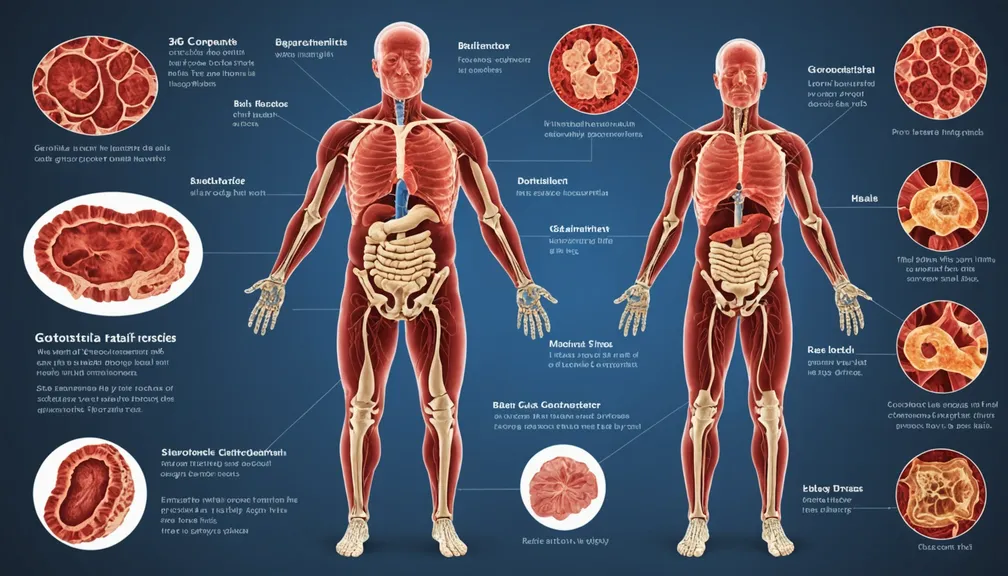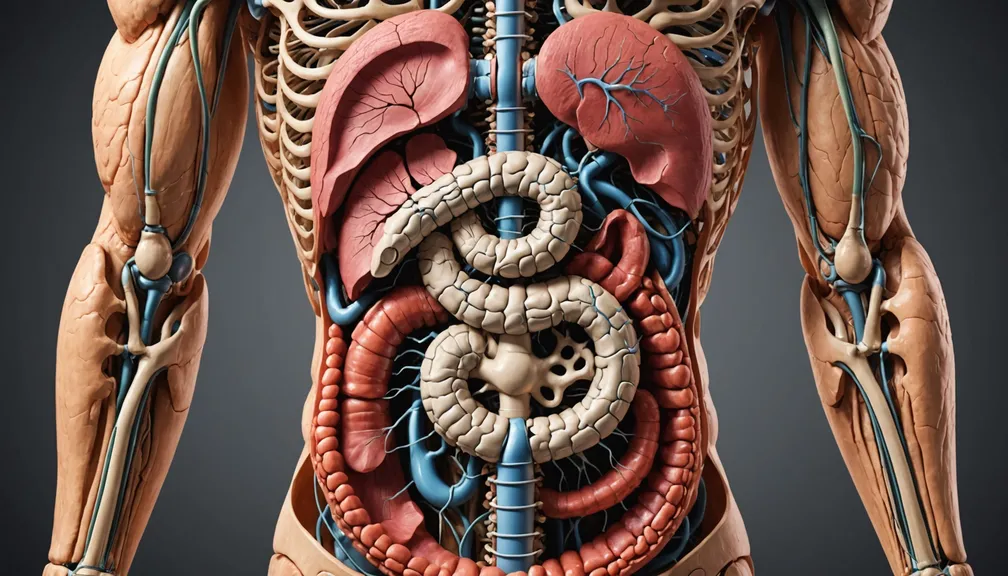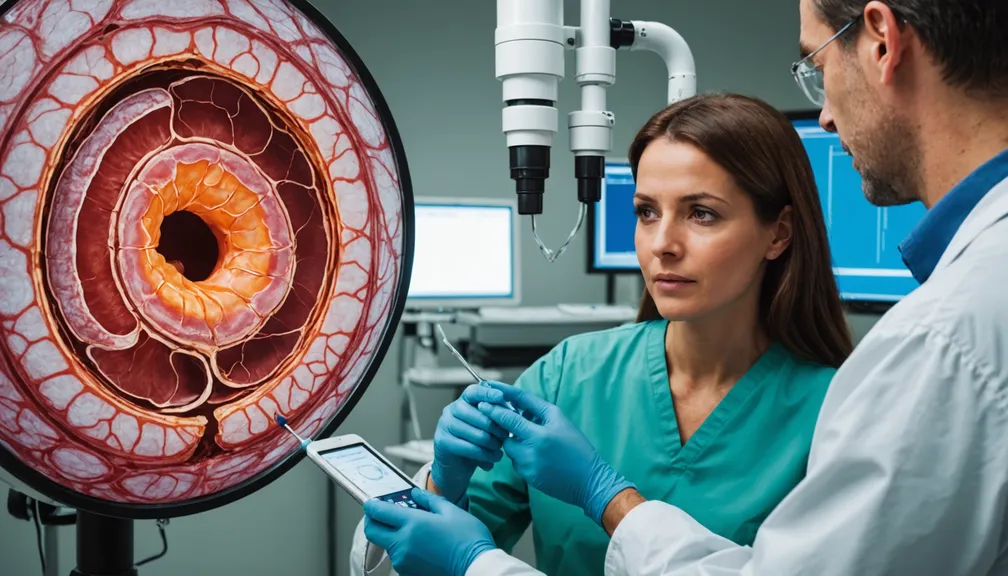Diagnostic Tests: Endoscopy, Biopsy, and Imaging Explained
Understanding the diagnostic tests used for rare gastrointestinal disorders can empower you and your loved ones to navigate your healthcare journey with confidence. This lesson explains three key diagnostic tools: endoscopy, biopsy, and imaging. Each plays a crucial role in identifying and managing rare gastrointestinal conditions.
Endoscopy
What is Endoscopy?
Endoscopy is a procedure that allows doctors to view the inside of your digestive tract using a thin, flexible tube equipped with a camera called an endoscope. This tool helps visualize areas that are otherwise difficult to see.
Why is Endoscopy Performed?
Endoscopy is performed to:
- Diagnose: Identify the cause of unexplained symptoms such as abdominal pain, difficulty swallowing, or chronic heartburn.
- Monitor: Track the progression of a known gastrointestinal condition.
- Treat: Perform minor surgical procedures, such as removing polyps or taking tissue samples.
Types of Endoscopy:
- Esophagogastroduodenoscopy (EGD): Examines the esophagus, stomach, and the beginning of the small intestine.
- Colonoscopy: Inspects the colon and the end of the small intestine.
- Capsule Endoscopy: Involves swallowing a small, pill-sized camera that takes pictures throughout the digestive tract.
What to Expect During an Endoscopy:
- Preparation: You may be asked to fast for several hours before the procedure.
- Sedation: Mild sedation is often provided to help you relax.
- Procedure: The endoscope is gently inserted through your mouth or anus and guided through your digestive tract.
- Duration: The procedure typically lasts between 15 to 45 minutes.
- Recovery: You may feel a bit groggy from the sedation but can usually go home the same day.
After the Endoscopy:
- Results: Your doctor will discuss the findings once you recover from sedation.
- Care: Follow any specific post-procedure instructions provided by your healthcare team.
Biopsy
What is a Biopsy?
A biopsy involves taking a small sample of tissue from your digestive tract to be examined under a microscope. This helps in diagnosing specific conditions.
Why is a Biopsy Necessary?
Biopsies are essential for:
- Confirming Diagnosis: Determining the exact nature of a suspicious area seen during endoscopy.
- Assessing Severity: Understanding the extent of inflammation or other changes in the tissue.
- Guiding Treatment: Helping doctors decide the most effective treatment plan based on the tissue analysis.
How is a Biopsy Performed?
- During Endoscopy: While performing an endoscopy, your doctor may use special tools to collect tissue samples.
- Local Anesthesia: Numbing the area to minimize discomfort.
- Sample Collection: Removing small pieces of tissue for laboratory analysis.
- Post-Procedure: Minimal recovery time, with possible mild soreness at the biopsy site.
Understanding Biopsy Results:
- Normal Tissue: Indicates no signs of disease.
- Inflammatory Changes: May suggest conditions like eosinophilic esophagitis.
- Abnormal Cells: Could indicate infections, autoimmune disorders, or other rare gastrointestinal diseases.
Your doctor will explain the results and discuss the next steps based on the findings.
Imaging Tests
Imaging tests provide detailed pictures of your internal organs and structures, helping to identify abnormalities in the digestive system.
Types of Imaging Tests:
- Computed Tomography (CT) Scan
- What It Does: Creates cross-sectional images of your body using X-rays.
-
Purpose: Identifies blockages, tumors, or structural abnormalities.
-
Magnetic Resonance Imaging (MRI)
- What It Does: Uses magnetic fields and radio waves to produce detailed images.
-
Purpose: Evaluates soft tissues, including the intestines and surrounding organs.
-
Ultrasound
- What It Does: Uses sound waves to create images of internal organs.
-
Purpose: Detects issues like fluid build-up or organ enlargement.
-
X-Ray
- What It Does: Provides basic images of the digestive tract.
- Purpose: Identifies obstructions or abnormal gas patterns.
Why are Imaging Tests Performed?
- Diagnosis: Detect structural problems or abnormalities not visible through endoscopy.
- Planning Treatment: Helps in preparing for surgical or other interventional procedures.
- Monitoring: Tracks the progress of a condition or response to treatment.
What to Expect During Imaging Tests:
- Preparation: Some tests may require fasting or specific preparations.
- Procedure: Varies by test; generally non-invasive and painless.
- Duration: Ranges from a few minutes (X-ray) to over an hour (MRI).
- After the Test: Normal activities can usually be resumed immediately unless otherwise instructed.
Combining Diagnostic Tests for Accurate Diagnosis
Often, doctors use a combination of endoscopy, biopsy, and imaging to obtain a comprehensive understanding of your condition. This multi-faceted approach ensures:
- Accurate Diagnosis: Cross-verification of findings from different tests.
- Comprehensive Treatment Planning: Tailoring treatments based on detailed information.
- Early Detection of Complications: Identifying issues before they become severe.
Healthcare Professionals Involved
Managing rare gastrointestinal disorders typically involves a team of specialized healthcare professionals:
- Gastroenterologist: A doctor specializing in the digestive system, responsible for performing endoscopies and managing overall treatment.
- Radiologist: A specialist in interpreting imaging tests like CT scans and MRIs.
- Pathologist: A doctor who examines biopsy samples to diagnose diseases.
- Nurse Specialist: Provides care, support, and information throughout your diagnostic and treatment processes.
- Dietitian/Nutritionist: Offers guidance on maintaining proper nutrition, especially important if your condition affects digestion and absorption of nutrients.
- Surgeon: In cases where surgical intervention is necessary, a gastrointestinal surgeon may be involved.
Preparing for Your Diagnostic Tests
To ensure the best outcomes and a smooth experience, consider the following tips:
- Communicate with Your Doctor: Share all your symptoms, medical history, and any concerns you may have.
- Follow Pre-Test Instructions: Adhere to fasting or medication guidelines to ensure accurate test results.
- Arrange Transportation: Some procedures require sedation, so having someone to drive you home is essential.
- Ask Questions: Understand the purpose, process, and potential risks of each test.
- Manage Anxiety: Practice relaxation techniques or discuss sedation options with your healthcare provider if you're feeling anxious.
Understanding these diagnostic tests can help demystify the process and prepare you for the steps ahead. By working closely with your healthcare team, you can navigate the complexities of rare gastrointestinal disorders with greater clarity and support.






